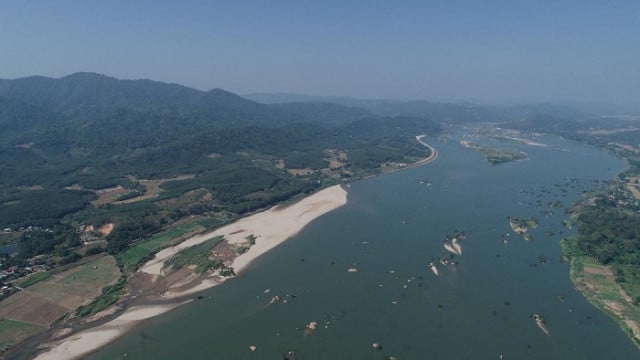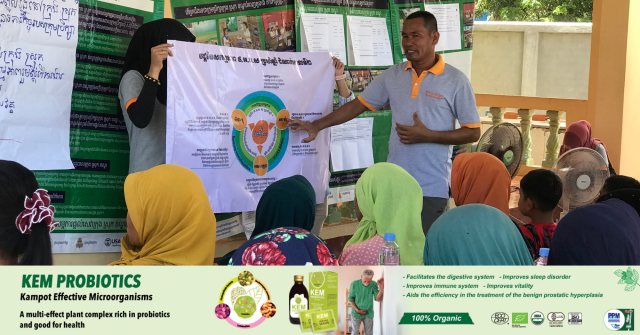Low flows turn Mekong aquamarine hue in Laos and Thailand

- By Cambodianess
- December 10, 2019 2:50 AM
Mekong River Commission warns that change in color is likely to spread with possible ‘problematic’ consequences
PHNOM PENH - The Mekong River Commission (MRC) says the river has recently taken on a blue-green hue in central Laos and northeast Thailand.
“Consequences could be problematic,” it warned.
In a statement released Monday, the MRC Secretariat in Vientiane said its preliminary analysis found many contributing factors.
Sediments dropping out
“The analysis has indicated that the extremely low flows now being experienced in the Mekong, during one of the worst droughts ever experienced in the region, have changed the water color.
“The fine sediments normally found in the fast flowing water and deeper water levels that give the water the brownish color have dropped out, creating clearer water conditions,” the statement said.
So when sunlight hits the river, “the water strongly absorbs what is known as the ‘long-wavelength colors’ at the red end of the light spectrum and makes the river look blue. This occurs in just a few meters of water.
“The clearer water allows microscopic plants or algae to grow on the sand and bedrock river bottom causing the margins of the river to turn green … These algae are normally flushed away by the river current.
Fertilizers could make algal blooms worse
“But due to the exceptionally low river level, this is not happening … Instead, the algae are building up.” Growth of algae “could probably be made worse” by fertilizers used in agriculture entering the river.
The statement said the phenomenon had occurred in Thakhek Province in Laos and Nakhon Phanom Province in Thailand.

Aerial view of algae building up at a very shallow part of the Mekong in Sangthong District in Vientiane (Photo: MRC)
“The blue-green water phenomenon is likely to spread to other stretches of the Mekong River where low flows are encountered,” said Dr So Nam, chief environment management officer at the MRC Secretariat.
Adverse impacts on fisheries
“The issues of low flows and sedimentation could possibly lead to adverse impacts,” he said.
These include fewer foods for insects and small fishes, and reduced productivity of aquatic biodiversity — including fish — due to high water clarity.
“This will in turn affect the fish catches and the livelihoods of local communities,” the statement said.
“High water clarity also leads to significant algal growth or algal bloom. During the day, this leads to high dissolved oxygen levels, but to very low dissolved oxygen at night. This can affect lives of different fish."
‘People should be careful watering their animals’
If water clarity remains high, the statement said, “the algal bloom can cause thick green mats that will rot and smell badly.”
And if it gets worse, algae can change from green species (Chlorophyceae) to blue-green species (Cyanophyceae), producing “toxic substances” that can harm animals.
“People should be careful watering their animals if the water is very green,” Dr So Nam said. But “it is unlikely such conditions will occur in the main river, and be restricted to backwaters.”
Outlook for rest of dry season
The MRC statement said the blue-green appearance in the Mekong “may persist until flows in the river increase at the onset of the next flood season.”
On the other hand, conditions could improve if large volumes of water are released from dam reservoirs along the Mekong in China and tributaries in Laos.
Releasing water would “mobilize sediments and give the Mekong its typically brown color,” the statement said.
“Flow monitoring shows that dry season flows have increased during the past few years due to water release from reservoirs in order to produce electricity.”















